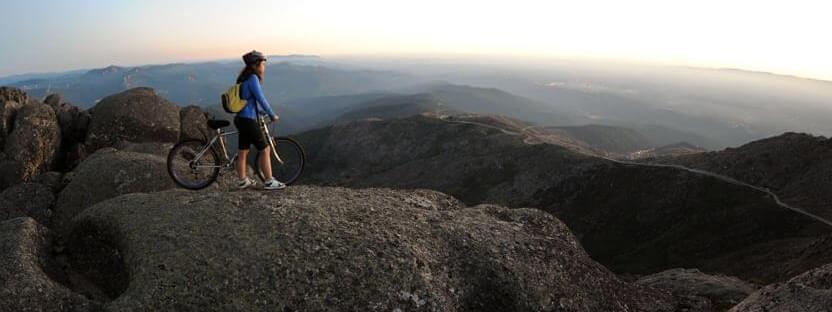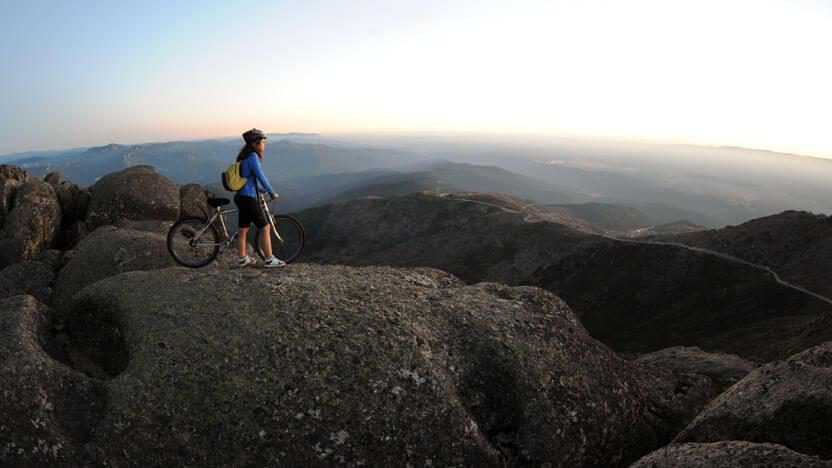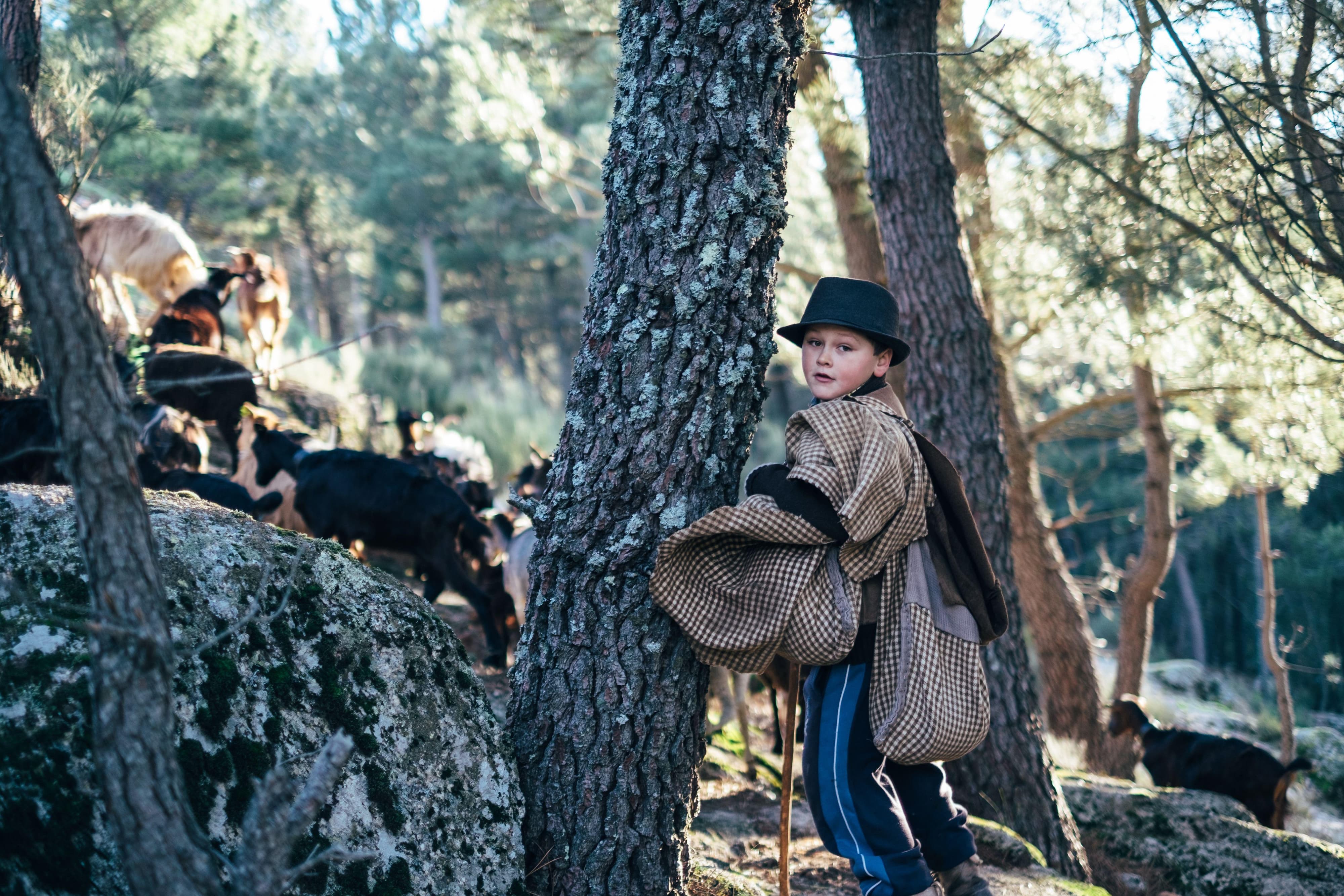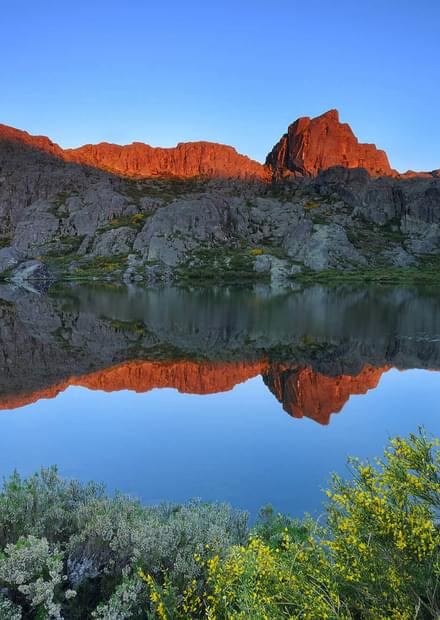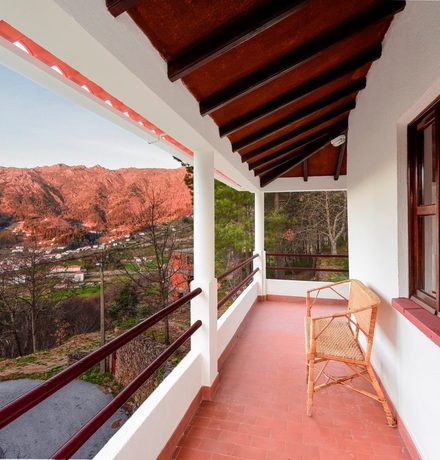Here, you will find the highest spot in continental Portugal, the only ski course in the country, the spring of two important rivers and an unexpected “alpine type” landscape abounding in glaciation traces. Embraced by the dazzling Serra da Estrela, the Mountain Villages are true gems of authenticity and peace of mind to discover, as well as the iconic Historical Villages of Portugal, such as Linhares da Beira, a paradise for paragliding fans. It was the first natural park to be created in Portugal, also holding the record for the largest protected area in the country.
Fauna & Flora
The unique character of Serra da Estrela’s Upper Plateau, its geographic isolation and its resulting diversity in fauna and flora species have earned the title of Biogenetic Reservation to Serra da Estrela.
The magnificent landscape of the mountain is the natural habitat of mammals like wolves, boars, otters, foxes, genets and wild European rabbits. They are overflown by birds such as golden eagles and common buzzards, peregrine falcons, Eurasian eagle-owls and black kites.
Among the green landscape and the rocks, you will find plants such as bellflowers, a true symbol of Serra da Estrela, sage-leaved rock roses, saxifraga spathularis and junipers. At the same time, you will also be able to enjoy shady trees such as sweet chestnuts, pedunculate oaks, Pyrenean oaks, maritime pines and holm oaks. In plateaus and valleys in the interior of the mountain, among pastures, you will see heather, rosemary and brooms peeping out.
Geology
Covering an area of 2216 square km within 9 municipalities - Belmonte, Celorico da Beira, Covilhã, Fornos de Algodres, Gouveia, Guarda, Manteigas, Oliveira do Hospital and Seia - Estrela UNESCO Global Geopark offers a diversified landscape, which is the result of multiple geological transformations, high climate contrasts and an ancient human occupation dating back to the beginning of the 4th millennium bC .
During the Pleistocene, an ice field developed on top of the plateau, creating the features that endowed the area with its distinctive geological characteristics: glacial deposits such as the Lagoa Seca moraine field, and glacial landforms, such as the Zêzere glacial valley.
Serra da Estrela is made up of extensive outcrops of granite, 340 to 280 million years old, along with metamorphic rocks, such as schists and grauvaques, 650 to 500 million years old. In places that were subject to the action of glaciers, we can observe glacial valleys, moraines and erratic blocks. The most impressive testimonies of this period include, among others, the upper valley of the Zêzere River, Garganta de Loriga, Nave de Santo António, the lateral moraine of Covão do Urso, the erratic blocks on the northern shore Lagoa Comprida and Poio do Judeu, an erratic block of huge dimensions.
Magnificent in all seasons
There is no special season to visit Serra da Estrela Natural Park. There is an unrivalled beauty all year long and each season reveals its rich biodiversity and fascinating natural heritage.
In winter time, the Yew (Taxus baccata) - a tree with great symbolism at this time of year, because it represents the end of the solar year, which culminates with the Winter Solstice, lends its majesty to the Serra da Estrela Natural Park . With its very numerous, rounded, yellowish male flowers and the much less conspicuous green female flowers that appear in pairs or isolated at the end of the branches. Flowering occurs between the end of winter and the beginning of spring.
Yews are considered true relics of the Portuguese forest, as they appear in deep valleys, steep and narrow slopes, generally next to water lines and difficult to access. Unique places that seem to be straight out of a fairy tale. And it is also the Juniper (Juniperus alpina), which surprises us when the Natural Park is covered in snow.
Spring is announced by the increased energy of the Rock Swallows (Ptyonoprogne rupestris) and the cervunais - high meadows, full of flowering cervum (Nardus stricta). From May to June, the very rare Sombria (Emberiza hortulana) fills the slopes with its song, and in the Cântaro Magro an impressive geological formation, where the source of the Zêzere River is located, the rock thrush (Monticola saxatilis) builds its nest.
In the summer, Serra da Estrela shows the secrets that were hidden under the white mantle of snow: orvalhinha (Drosera rotundifólia), Argençana-dos-pastores (Gentiana lutea) or the Silene foetida subsp. foetida, one of the three endemic species that are exclusive of Serra da Estrela. And even the gate-keeper butterfly (Pyronia tithonus) appears in summer. With its magnificent yellow hue, they can be seen flying over the Vale do Rossim Lagoon, in the Penhas Douradas until September.
In Serra da Estrela Natural Park, 1420 m-high Covão d'Ametade is invigorating for both the soul and the senses. Surrounded by Cântaro Magro and Cântaro Gordo, Covão d'Ametade is particularly beautiful in autumn. This is the time of year when the birch trees shed their skins and let their yellow, red and orange hues appear.
Walking & Trekking in Serra da Estrela
If you are addicted to trekking at the heart of the most unbelievable natural landscapes, Serra da Estrela Natural Park offers its visitors several challenging walking circuits. These are certainly the most impressive ones:
Lagoons
This is a route across the highly placed lagoons of Serra da Estrela. With glacial origin, they are water reservoirs with unique natural characteristics that were later connected and used in the first hydroelectric networks of Portugal: Lagoa Comprida, Lagoa dos Conchos and impressively well-preserved Lagoa Escura.
Zêzere Glacial Valley
This walking trail starts in Manteigas. All the way up to discover the greatest glacial valley in Portugal. Crystal-clear Zêzere river follows the whole circuit that ends in Covão d'Ametade.
Garganta de Loriga
This route is marked by its imposing glacial valley with very rocky slopes. Lagoons and glacial ice gaps that are still today part of the goat and sheep flockes, looking for better pastures.
Planalto da Torre
It is a circular trail that offers breath-taking views across some of the most important and exclusive habitats and a unique fauna and flora that characterise the upper region of Serra da Estrela. Discovering the Lagoons and Covão do Meio, Covão do Boieiro, Salgadeira e Cântaro Gordo.
Planalto Superior da Serra da Estrela
This incredible trekking route shows you the amazing sculptures that the ice carved into the granite along the lagoons, valleys and several glacial formations that
all together provide the conditions to create some of the most interesting ecosystems of this mountain. It crosses Penhas Douradas, Vale das Éguas, Nave da Mestra, Vale do Conde, Covão dos Conchos, Piornal and Vale do Rossim.
This is, without a doubt, the brightest star among the Portuguese mountains !
Location
Google Maps
